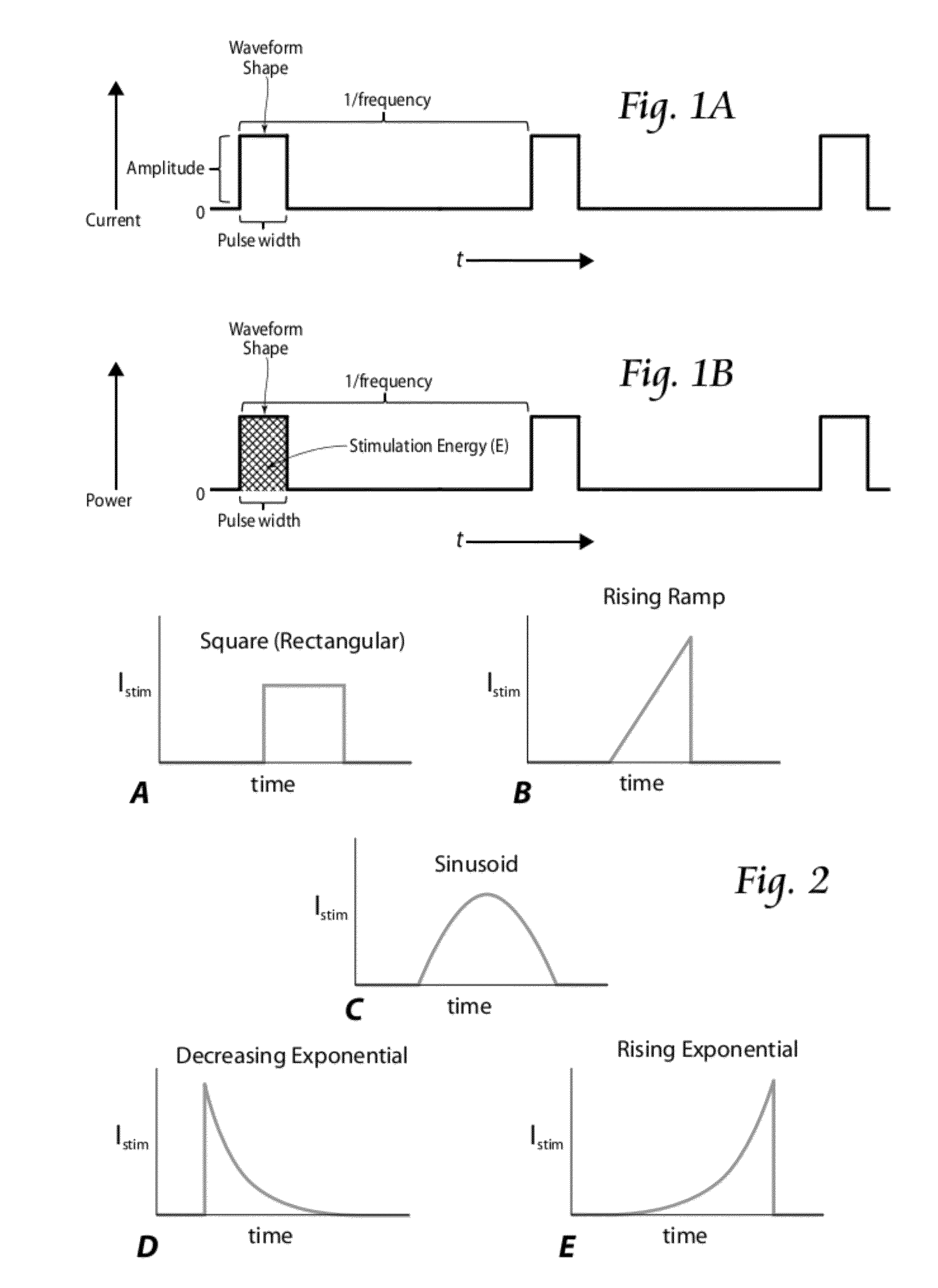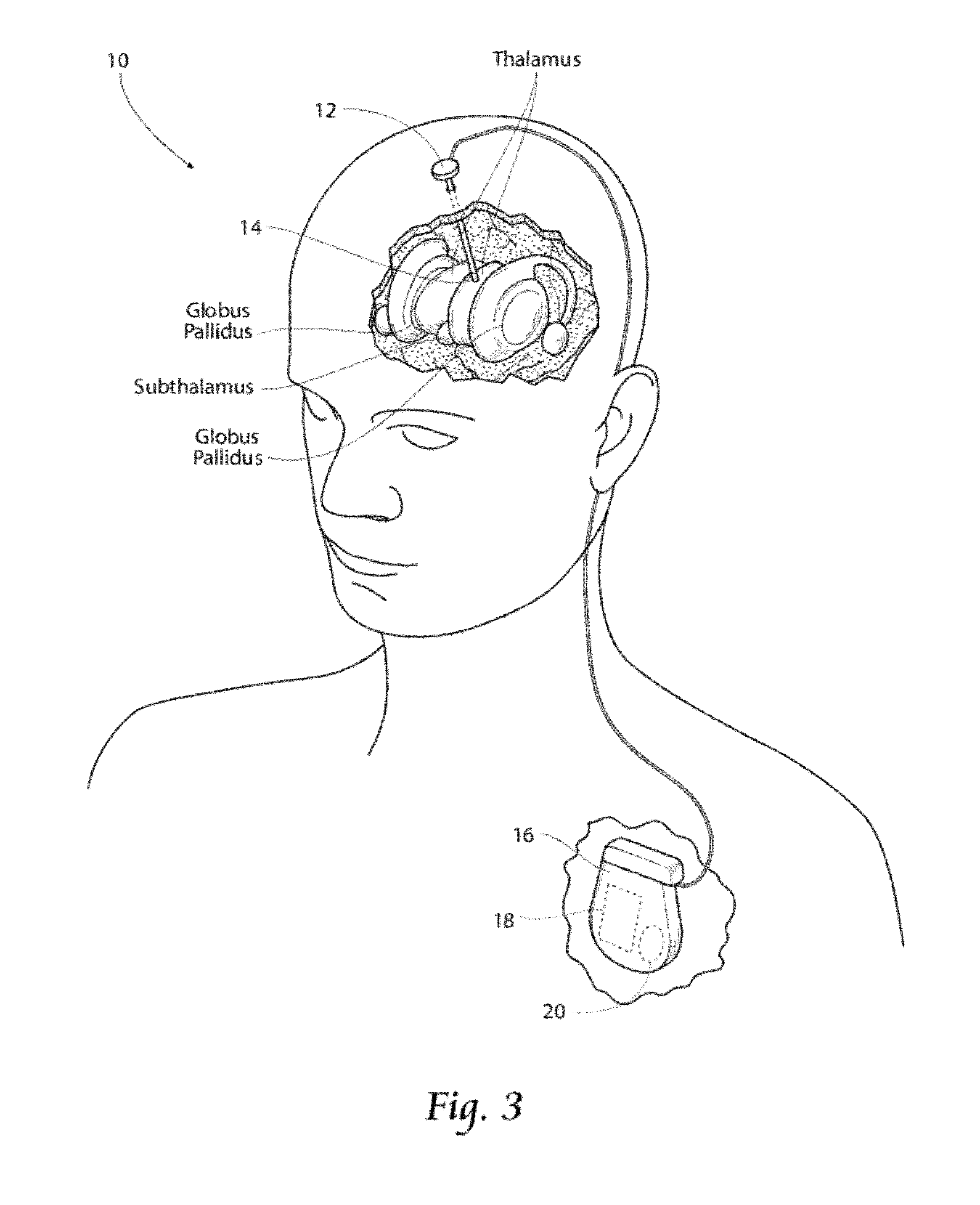Waveform shapes for treating neurological disorders optimized for energy efficiency
a neurodegenerative disorder and waveform technology, applied in the field of system and method of stimulating nerves, can solve the problems of sacrificing clinical efficacy, generating unwanted side effects, and reducing the volume of implantable stimulators, so as to prolong the battery life of stimulators, reduce the cost and risk of battery replacement surgery, and optimize the energy-efficiency of stimulation waveforms.
- Summary
- Abstract
- Description
- Claims
- Application Information
AI Technical Summary
Benefits of technology
Problems solved by technology
Method used
Image
Examples
Embodiment Construction
I. System Overview
[0030]FIG. 3 is a system 10 for stimulating tissue of the central nervous system. The system includes a lead 12 placed in a desired position in contact with central nervous system tissue. In the illustrated embodiment, the lead 12 is implanted in a region of the brain, such as the thalamus, subthalamus, or globus pallidus for the purpose of deep brain stimulation. However, it should be understood, the lead 12 could be implanted in, on, or near the spinal cord; or in, on, or near a peripheral nerve (sensory or motor), in any subcutaneous tissue such as muscle tissue (including cardiac tissue) or adipose tissue for the purpose of selective stimulation to achieve a therapeutic purpose. In addition, the lead 12 may be utilized for transcutaneous stimulation where electrodes are placed, not subcutaneous, but on an outer skin surface.
[0031]The distal end of the lead 12 carries one or more electrodes 14 to apply electrical pulses to the targeted tissue region. The electri...
PUM
 Login to View More
Login to View More Abstract
Description
Claims
Application Information
 Login to View More
Login to View More - R&D
- Intellectual Property
- Life Sciences
- Materials
- Tech Scout
- Unparalleled Data Quality
- Higher Quality Content
- 60% Fewer Hallucinations
Browse by: Latest US Patents, China's latest patents, Technical Efficacy Thesaurus, Application Domain, Technology Topic, Popular Technical Reports.
© 2025 PatSnap. All rights reserved.Legal|Privacy policy|Modern Slavery Act Transparency Statement|Sitemap|About US| Contact US: help@patsnap.com



